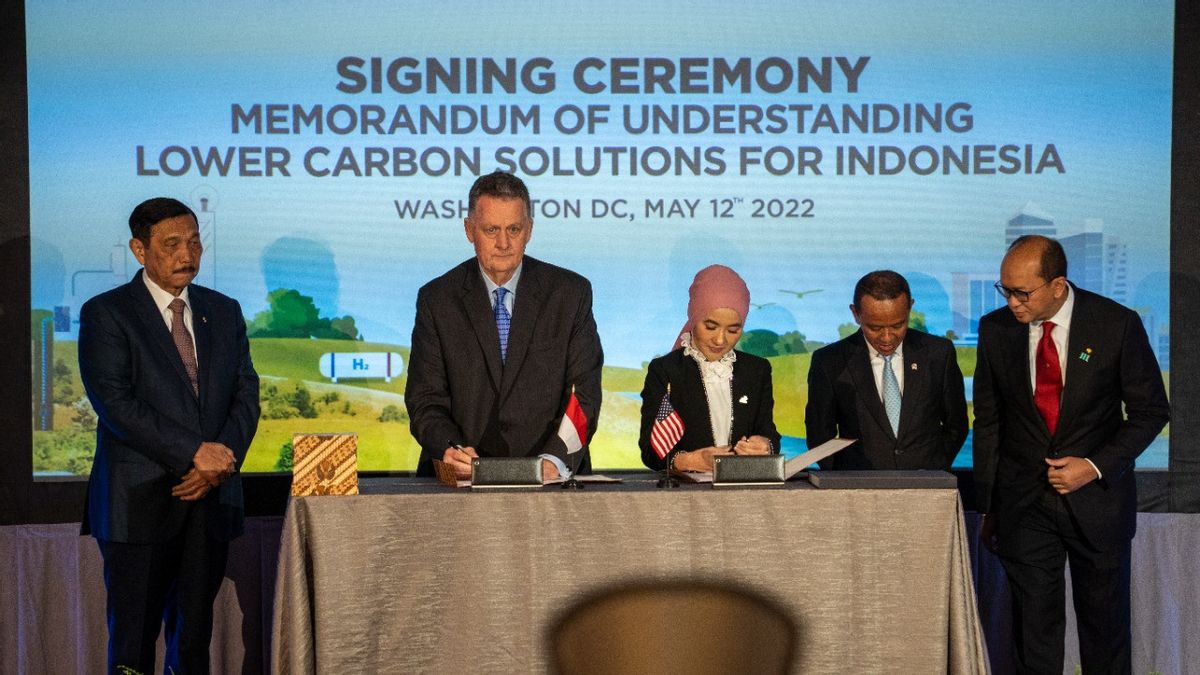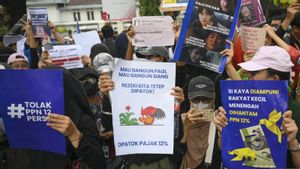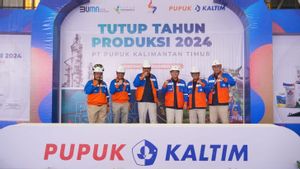JAKARTA - PT Pertamina (Persero) and Chevron New Ventures Pte. Ltd. (Chevron) is exploring cooperation as an effort to support the net zero emission target in 2060.
Pertamina President Director Nicke Widyawati said Pertamina was committed to increasing its renewable energy mix from 9.2 percent in 2019 to 17.7 percent in 2030.
"This partnership is a strategic step for Pertamina and Chevron to complement each other's strengths, as well as develop low-carbon energy projects and solutions to encourage self-reliance and domestic energy security," Nicke said in a press release, Friday, May 13.
Nicke said that Indonesia as the second largest country that has geothermal installed capacity has been developing geothermal since 1974.
Currently, through Subholding Power & NRE, Pertamina has a total installed geothermal capacity of 1,877 megawatts (MW) originating from 13 geothermal work areas, of which 672 MW comes from work areas that are operated alone, and 1,205 are joint operation contracts. contracts/JOCs).
The self-operated work area with a total capacity of 672 MW includes 12 MW Sibayak Area, 55 MW Lumut Balai Area, 220 MW Ulubelu Area, 235 MW Kamojang Area, 30 MW Karaha Area, and 120 MW Lahendong Area.
In addition, Pertamina is also diversifying geothermal development, among others, currently running as a pilot project, namely green hydrogen which is being developed in the Ulubelu Area with a production target of 100 kg per day and brines to power which is being developed in the Lahendong Area and has a potential capacity of 200 MW. from other work areas.
Nicke added, in collaboration with various parties, Pertamina is also developing the implementation of Carbon Capture and Storage (CCS) and Carbon Capture Utilization, and Storage (CCUS) as one of the company's strategies to reduce carbon emissions in two oil and gas fields namely Gundih and Sukowati.
Pertamina is currently studying the commercialization of the CCUS technology application in the Sumatra region.
"The Indonesian government itself already has an energy transition roadmap contained in the National Energy Grand Strategy. In this roadmap, the use of renewable energy is targeted to reach 23 percent by 2025," continued Nicke.
The government is aware of the importance of a collaborative approach to achieve the low carbon goal.
The English, Chinese, Japanese, Arabic, and French versions are automatically generated by the AI. So there may still be inaccuracies in translating, please always see Indonesian as our main language. (system supported by DigitalSiber.id)












